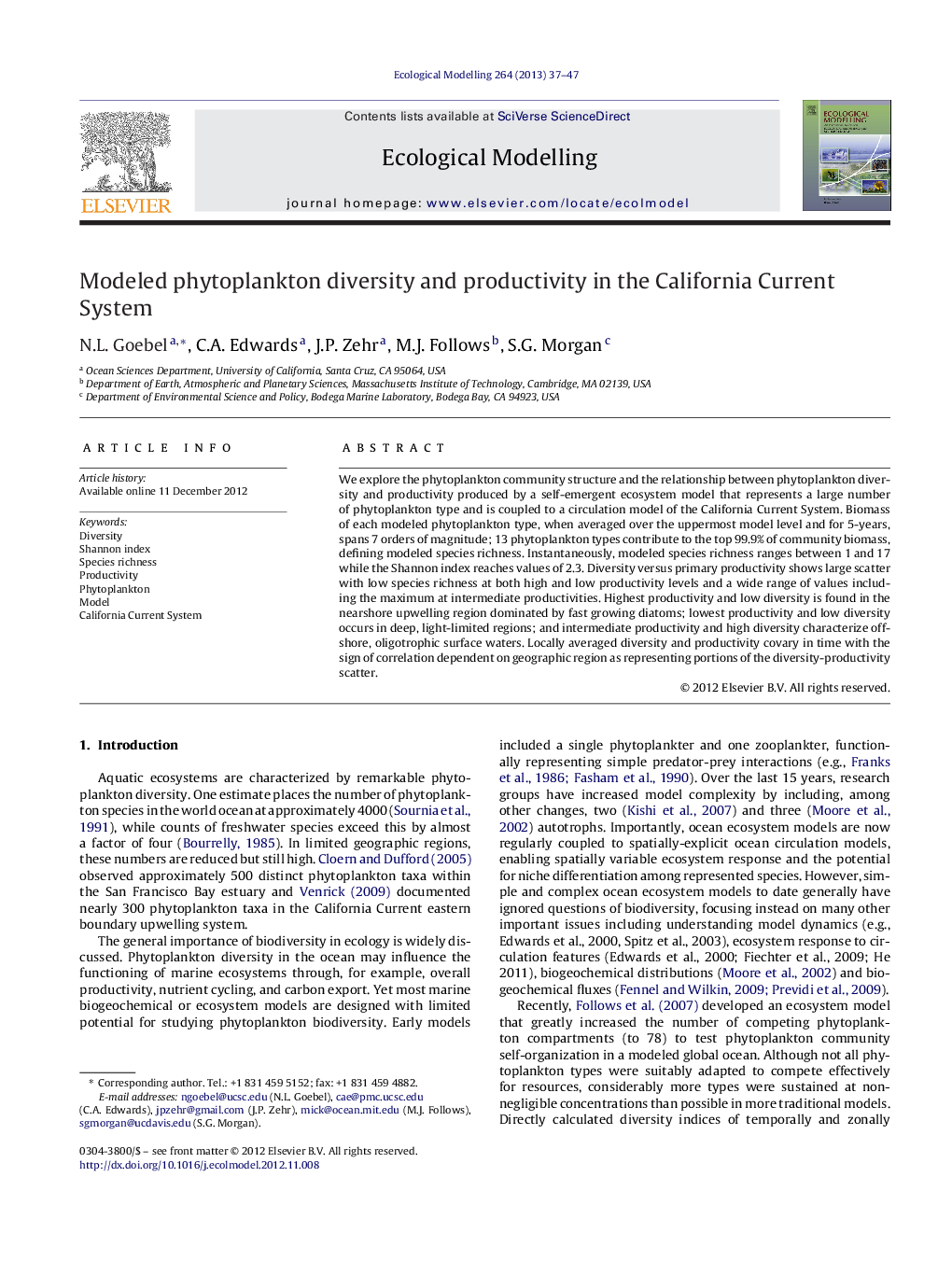| Article ID | Journal | Published Year | Pages | File Type |
|---|---|---|---|---|
| 4376085 | Ecological Modelling | 2013 | 11 Pages |
We explore the phytoplankton community structure and the relationship between phytoplankton diversity and productivity produced by a self-emergent ecosystem model that represents a large number of phytoplankton type and is coupled to a circulation model of the California Current System. Biomass of each modeled phytoplankton type, when averaged over the uppermost model level and for 5-years, spans 7 orders of magnitude; 13 phytoplankton types contribute to the top 99.9% of community biomass, defining modeled species richness. Instantaneously, modeled species richness ranges between 1 and 17 while the Shannon index reaches values of 2.3. Diversity versus primary productivity shows large scatter with low species richness at both high and low productivity levels and a wide range of values including the maximum at intermediate productivities. Highest productivity and low diversity is found in the nearshore upwelling region dominated by fast growing diatoms; lowest productivity and low diversity occurs in deep, light-limited regions; and intermediate productivity and high diversity characterize offshore, oligotrophic surface waters. Locally averaged diversity and productivity covary in time with the sign of correlation dependent on geographic region as representing portions of the diversity-productivity scatter.
► We represented 17 individual phytoplankton in a self-emergent ecosystem model of the CCS. ► Highest diversity was modeled in intermediate productive offshore oligotrophic surface waters. ► High productivity-low diversity was modeled in the diatom-dominated nearshore upwelling region. ► Low productivity-low diversity was found in deep, light-limited regions. ► Species richness and productivity covaried with time.
